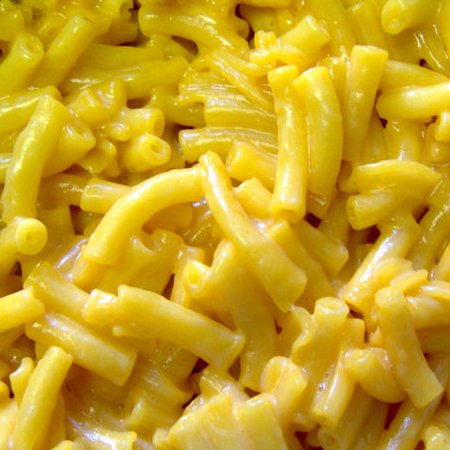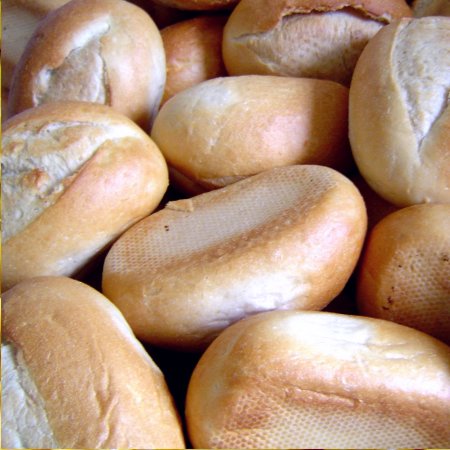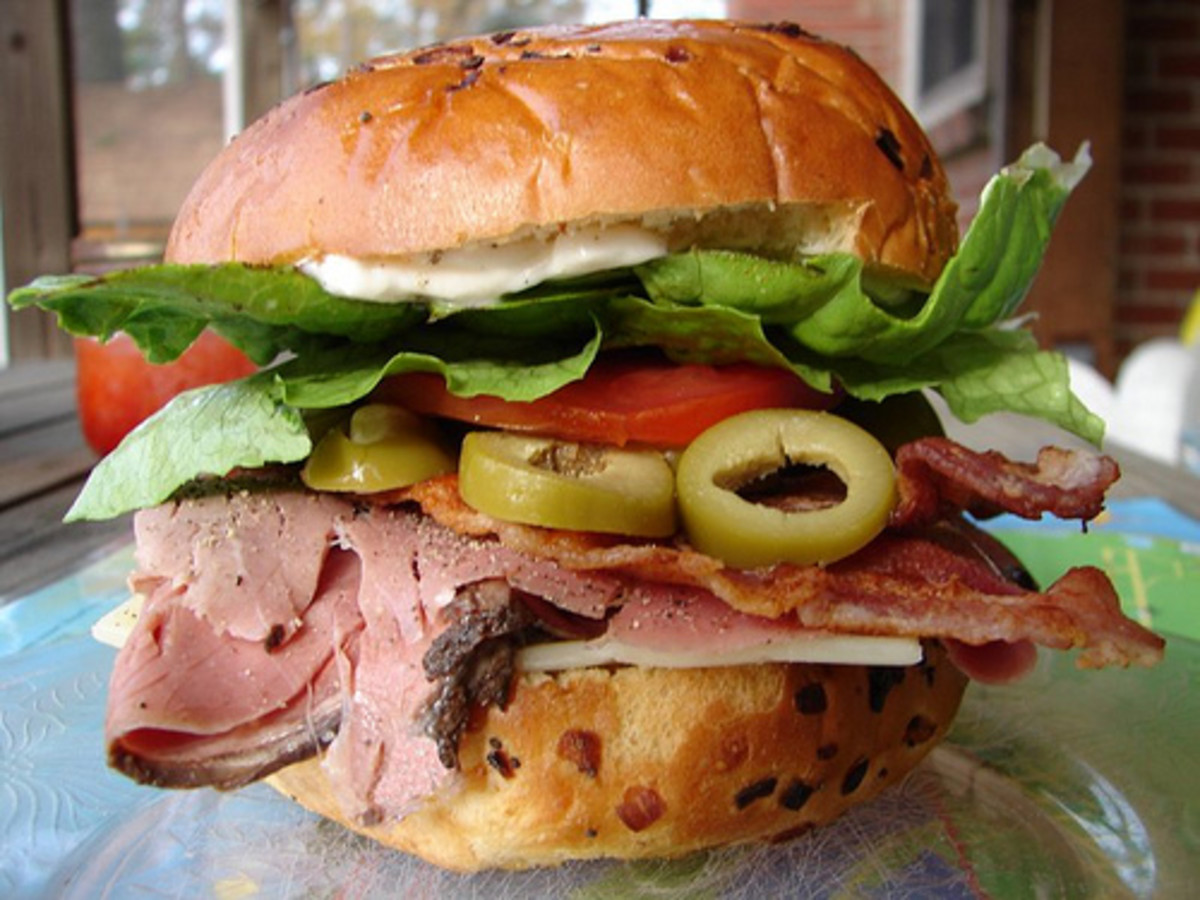Why Do I Eat When I am Stressed or Depressed? Identifying Emotional Eating
What is Emotional Eating or Psychological Hunger?
Ideally someone eats in response to feeling hungry, but there are also many other reasons that someone might eat other than hunger.
Many people eat in response to different emotions. They may eat when stressed or depressed, when angry or frustrated, when anxious or bored or when sad or lonely.
Emotional eating occurs when someone eats in response to emotions or other triggers rather than in response to hunger. Eating because of one's emotions is also known as psychological hunger.
The unfortunate result of eating when one is not hungry is potentially a whole host of unhealthy habits that include changes to health and weight gain.
Eating Ice Cream

Emotions Lead to Overeating
Emotional eating occurs when one eats in response to emotions or feelings rather than in response to the body's need for food or hunger.
Experts estimate that 75% of overeating is caused by emotions. Unfortunately the foods that get consumed when someone is emotionally eating are frequently high calorie, high fat junk foods or comfort foods.
Eating in response to emotional cues can make it difficult for people to maintain their weight or lose weight.
Recognizing that one is an emotional eater is the first step in regaining control over the emotions that may be sabotaging weight loss efforts by keeping emotions from affecting the types and amount of food eaten.
Definition of Emotional Eating
Emotional Eating has been defined by different sources as:
- The practice of consuming large quantities of food—usually "comfort" or junk foods—in response to feelings instead of hunger. (MedicineNet)
- Eating for reasons other than hunger. (Jane Jakubczak RD)
- When people use food as a way to deal with feelings instead of to satisfy hunger. (TeenHealth)
Soothe Yourself Without Food

Reasons for Eating
Someone may eat when in response to different emotions. They may eat when they experience:
- Stress
- Boredom
- Anger
- Anxiety
- Frustration
- Sadness
- Loneliness
- Depressed
- Happy
All kinds of emotions from happy to sad ones can affect why people choose to eat.
Food Facts
It has been estimated that 75% of overeating is caused by emotions.
Definition of Psychological Hunger
Another term used by some for emotional eating is psychological hunger.
Maria Oz defined psychological hunger for the Dr. Oz show as:
The desire to eat even after eating a big meal or when we are having a craving for a specific food.
Some regard it as eating food because it tastes good, it is fun without any real reason for needing to eat a particular food.
This type of eating is perhaps best illustrated as eating pumpkin pie at Thanksgiving, even though you are feeling stuffed after a large meal.
Vote on Reasons for Eating
Do you eat because you are...
Identifying Emotional Eating - Video
Andy Campbell from The Daily Buzz sits down with Dr. Erica Karlinsky, a clinical psychologist to help identify the signs and ways to prevent eating in response to emotions from HeadTraumaTV.
Sweet Treats are Hard to Resist

Signs of Emotional Eating
Signs of being an emotional eater or that eating is due to emotions instead of hunger include:
- Eating when sad, upset, stressed, angry, frustrated, depressed or tired.
- Eating or drinking large amount of junk foods—those high sugar, fat or salt.
- Eating when you are not hungry because someone else is encouraging you to eat.
- Eating because a food or foods make you feel better or give you more energy.
- Eating at times when others might reach for a drink or smoke a cigarette.
Common Reasons or Triggers for Eating
The common reasons for eating can be divided into five main categories:
- Physiological - eating in response to physical internal cues e.g. hunger pains, headache or low blood sugar.
- Emotional - eating in response to emotions e.g. stress, depression, anger, depression.
- Psychological - eating in response to thoughts e.g. making excuse for eating "I deserve this because..." or scolding with negative self talk.
- Social - eating in response to other people e.g. eating more because you are eating with others, eating more and/or making poor food choices because others are doing the same.
- Situational - eating in response to an opportunity e.g. free food or an event e.g. party, movie. sport game, watching TV, working from home.
These can further be grouped into internal and external cues, with internal cues coming from the physiological, emotional and psychological triggers and external ones from social and situational triggers.
More Articles on Eating in Response to Emotions
- Emotional Eating: Feeding Your Feelings
Eating to feed a feeling, and not a growling stomach, is eating in response to emotions. - Emotional Eating: Get Facts on Help and Treatment
Learn how to recognize the emotional problems, habits, and triggers that cause people to overeat, and find out how to prevent compulsive eating. - Emotional Eating for Teens
We've all eaten a whole bag of chips out of boredom or while cramming for a big test. Learn more about managing an emotional response to eating in this article for teens.
Macaroni (Mac) and Cheese

Food is Comforting
It is not too surprising that people find food to be comforting, since as a baby for many people the first way of finding comfort was with food.
Many of the foods people like to eat are referred to as "comfort foods.": These are foods a person ate as a child which may bring back happy childhood memories and provide a feeling of comfort when eaten.
Some of these foods can also ease anxiety and stress and soothe frustration for a bit of time by their impact on the brain.
In the movie The Hundred Foot Journey, we are reminded of the importance of food as the characters quote that "Food is Memories" and "Every Bit Takes You Home."
Ingredients in Comfort Foods
Comfort foods are ones high in one, two or all three areas sugar, fat and salt.
These foods often are a combination of all three.
Kirsti A. Dyer MD, MS HealthfulMD
What is a Comfort Food?
Comfort foods are foods that make you feel better when you eat them. They may be foods you ate a a child, particularly foods you ate on special occasions.
These foods are often high in fat, high in sugar, or most often high in both fat and sugar. Many are also high in sodium or salt.
Some may include alcohol as a comfort food or technically a comfort beverage, because of the effect of soothing the nerves.
The downside is that many if not most of these comfort foods are also high in empty calories which can contribute to weight gain.
Food is Energizing
Food and beverages can also give you energy, which many people use to combat the effects of not getting enough sleep or fatigue.
People reach for chocolate, caffeinated- and energy-drinks for an extra boost.
These foods and beverages have components in them that give a person more energy and make someone feel more alert and able to function.
Fresh French Bread is Irresistible

Different Comfort Foods
Macaroni and cheese, fresh white bread or homemade cookies are good examples of this type of comfort food, combining salt, fat and sugar (in the form of white flour).
Other comfort foods like the sweets ice cream, cakes, pies have high sugar content which gives them an energy boost and makes them feel better for a while.
Many people reach for high fat foods like chips, french fries, fried chicken, pizza and cookies to provide comfort.
Vote on Favorite Comfort Food
What is your favorite comfort (or trigger) food?
External Triggers for Emotional Eating
People reach for foods during stressful times or in response to other emotions like anger, frustration or sadness to help them manage these emotions with food.
In addition to eating to soothing the emotions, people may turn to eating to cope with the daily living and daily stresses.
Some of these eating triggers may include:
- Unemployment
- Financial pressure
- Health problems
- Relationship conflicts
- Work stress
- Bad weather
- Fatigue
- Caregiver stress
Identifying the emotional eaters' triggers is key in managing eating in response to internal and external factors. Tracking triggers in a food diary, online or with a phone app can be very helpful in identifying eating triggers.
More on Gaining Control of Emotional Eating
- Weight-loss: Gain control of emotional eating - Mayo Clinic
Emotional eating can sabotage your weight-loss efforts. Regain control with tips from the Mayo Clinic.
Breaking the Cycle of Emotional Eating
Bariatric Physician Assistant Chrystyna Senkel, PA-C looks at why people sometimes turn to food for comfort and how to break the cycle of having emotions impact eating in this video clip from the Weight Loss Surgery Channel.
Write Down What You Eat

Track Your Food - Edit
Keeping track of what one eats in a food journal, online or with a phone app is a very effective way to track eating habits, patterns and emotional triggers.
The emotional eater can track what he or she is eating (portions and calories) along with the moods that he or she was in at the time that the food or beverage was consumed or the reasons that the person ate e.g. hunger, boredom, stress, anger etc.
Tracking food habits can be very help in identifying triggers that may cause the emotional eater to eat.
Once the emotional eater has identified their eating triggers then he or she can come up with strategies to help in avoiding emotional eating.
Keep a Food and Feelings Journal

Online Food Tracker and Journal
- SuperTracker
Supertracker from ChooseMyPlate can help you keep track of your diet, your activity and even gives you a place to keep an online food journal.
Free Phone Food Trackers
Amazon has several different free phone app food trackers that can be downloaded and used to keep track of food and emotions.
Calorie Counter and Diet Tracker by MyFitnessPal
Lose It! by FitNow, Inc
These two trackers are two that my college nutrition students have used and recommended for tracking their own food intake.
Read More about Breathing and Using the Breath to Relax
- Breathe, Breath Work and Breath Walking: Ways to Relax and Destress
Breathing is a powerful relaxation tool that is readily available and under our control. Simply slowing down to focus on the breath can have powerful effects on one's ability to cope with stress.
10 Things to Do Instead of Eat
Here is a list of 10 suggestions of possible things to do in place of eating.
- Go for a walk or run.
- Drink a glass of water.
- Chew gum.
- Breathe.
- Read a book.
- Work in the garden.
- Phone a friend.
- Listen to music.
- Craft—knit, crochet, sew or make something.
- Take a nap.
Brainstorming things to do instead of eating before the cravings or triggers hit is key to resisting the emotional triggers.
Having your own personal 'go to' list of things you can do instead of eat when you are stressed, depressed or bored will help make it easier to not eat when the emotional triggers hit.
Deepak Chopra Helps a Woman with Emotional Eating on Oprah
Deepak Chopras Tips for to Break Free of Emotional Eating
Three tips that Deepak shares on the Oprah show to help a woman break free of emotional eating:
- Be aware of your body. Ask if you are hungry before eating.
- Move more. Aim for 10,000 steps a day.
- Get enough sleep.
Chopra is wearing a Fitbit tracker to track movement and sleep. He is also working as part of the Weighless Project to encourage people to be healthier.
Steps for Confronting the Eating as a Pick-me-up
- 4 Steps to Help You Confront Your Emotional Eating | Full Plate Living
When we’re sad or upset, we naturally want to feel better. And one common pick-me-up is eating.
Keep an Apple Handy

Managing Emotional Eating
Here are a list of helpful tips for regaining control over the emotions that may be affecting what you eat:
- Recognize that emotions may affect when and what you eat.
- Identify the triggers.
- Find other ways to soothe without food.
- Track the emotions, the triggers and the food eaten.
- Become more mindful of what you are eating.
- Retrain your brain.
By tracking emotions, triggers and becoming more aware of why you want to eat you can build in your own pause button to hit before you start to eat which will help you decide if you are truly eating out of hunger or because of some other emotional or social factor.
Finding ways to make healthy foods one's new "go to" comfort foods can be helpful. Retrain your brain to think of a juicy apple, air popped popcorn or a glass of iced water as a delicious, healthy and comforting treat.
© 2014 Kirsti A. Dyer







